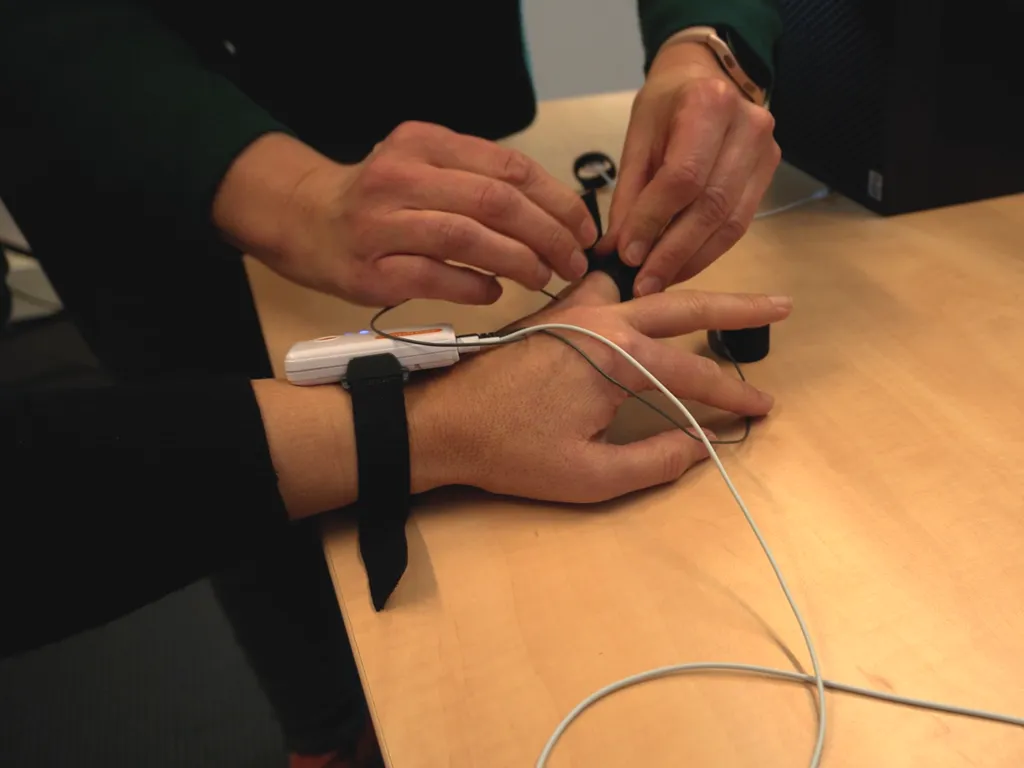Understand how the brain works
Neuroscience research
Understanding the brain’s complex mechanisms behind cognitive and social behaviors is no small feat. It requires more than data—it demands the right tools.
Whether you’re exploring human behavior or researching disease models, Noldus provides the solutions to simplify your process. This allows you to focus on what truly matters: advancing scientific discovery.
- Effortless data integration
- Built for your research needs
- Maximize your time on discovery, not logistics

A day in the life of a neuroscience researcher
A human neuroscience researcher’s day is a balance of complex tasks—from conducting experiments to managing vast amounts of sensitive data. The day might start by reviewing results from the previous study, ensuring all data is ethically handled and securely stored. Then it’s time to run new experiments, integrating physiological, behavioral, and cognitive data to explore how the brain responds.
Understanding the brain’s role in human behavior
The researcher collaborates with colleagues, sharing insights and refining methodologies based on new findings. Managing equipment and ensuring that all software functions smoothly are ongoing responsibilities. With a clear focus on discovery, every task contributes to better understanding the brain’s role in human behavior, helping to push the boundaries of science.
Neuroscience research includes a wide range of methodologies, such as EEG, fNIRS, physiology, eye-tracking, and facial expression analysis. A synchronization platform is at the heart of it all.
Innovative solutions for neuroscience research
Free product portfolio
When we want to understand the motivations and cognitive processes behind human behavior, it is crucial to combine insights from both behavioral and physiological responses. Check out our portfolio of tools and solutions for neuroscience research.
Methods for understanding the human brain

Neuroimaging techniques
Neuroscience research utilizes a wide range of methodologies, each offering unique insights into brain function. Some non-invasive imaging techniques include:
- Electroencephalography (EEG): Measures electrical activity, commonly used to study brain waves during different mental states.
- Functional Near-Infrared Spectroscopy (fNIRS): Uses near-infrared light to detect changes in oxygenated blood. Also, fNIRS is portable.
Together, these diverse methods provide researchers with a comprehensive toolkit to unravel the complexities of the brain and deepen our understanding of how it drives human behavior.

Behavioral experiments
Gaining a comprehensive understanding of brain function requires not only advanced tools but also methodologies that integrate data from multiple perspectives, such as:
- Video observation: The solution for creating recordings to capture behaviors and interactions of your participants.
- Coding video observations: To be able to analyze behaviors properly. Also, a visualization of the coded behaviors gives you a clear overview.
Behavioral experiments offer invaluable insights into how the brain's internal processes manifest in observable actions, bridging the gap between neural activity and real-world behavior.

Psychophysiology
Bodily responses help understand how the brain and body interact in various psychological states. Some psychophysiology techniques include:
- Multimodal research: Get a comprehensive view of participants' behaviors and physiological responses with the click of a button.
- Facial expression analysis: The face gives a glimpse into emotional experiences. This helps in understanding how emotions manifest.
A combination of physiological and behavioral data can provide you with essential information that will help you to further understand and explain your participants’ behaviors.
Don't know where to start?
We're happy to help
Book a meeting for an online or onsite session.
Together, we can discuss you research requirements and come up with the best solution!